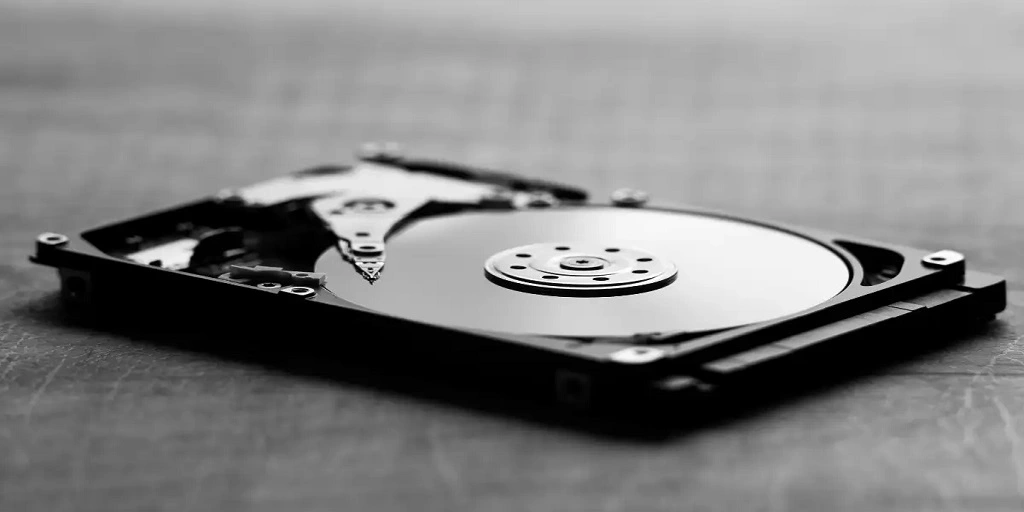When using a computer, encountering error messages is frustrating and confusing, especially if they indicate a serious issue. One such error message that users may experience is “The Disk Does Not Have Enough Space To Replace Bad Clusters.” This error message can occur when fixing bad clusters on a hard disk. Bad clusters are areas of the disk that are no longer functioning correctly.
Addressing bad clusters on a hard disk is vital for maintaining the health and functionality of the disk. Defective clusters can cause data loss, system failures, and other difficulties that affect computer users. It’s essential to address bad clusters as soon as they are detected to prevent further damage to the disk and the stored data.
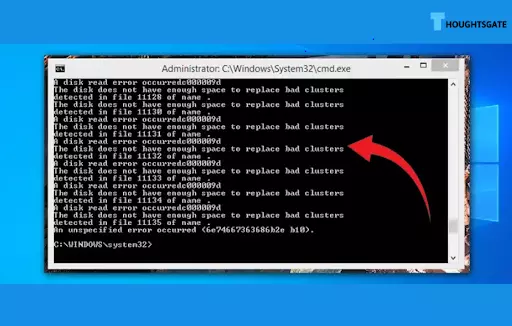
This article will provide an overview of the error message “The Disk Does Not Have Enough Space To Replace Bad Clusters.” We will also discuss the reasons for bad clusters on a hard disk and provide tips for effectively doing so. By the end of this article, you will better understand how to resolve bad clusters and maintain the health of their hard disk.
What does “the disk does not have enough space to replace bad clusters” mean?
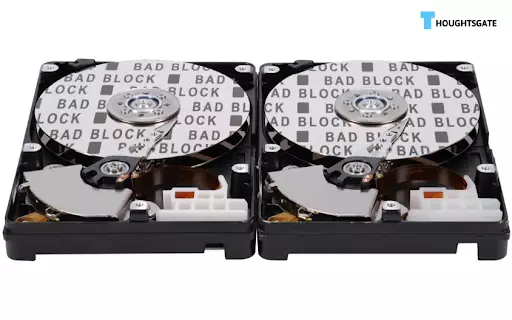
The error message “the disk does not have enough space to replace bad clusters” typically appears when a computer attempts to fix or repair bad clusters on a hard disk. Bad clusters are areas of the disk that have become damaged and can no longer store data reliably. When attempting to repair bad clusters, the computer may need to mark the damaged clusters and allocate new clusters to replace them.
However, if the hard disk is low on available space, there may need to be more free clusters to replace the bad ones. As a result, the computer will display an error message indicating that it needs more space to complete the repair process. This error message can indicate a severe issue with the hard disk, as bad clusters can lead to data loss, system crashes, and other problems.
Methods to resolve the issue “the disk does not have enough space to replace bad clusters.”
Wait until the CHKDSK operation is finished
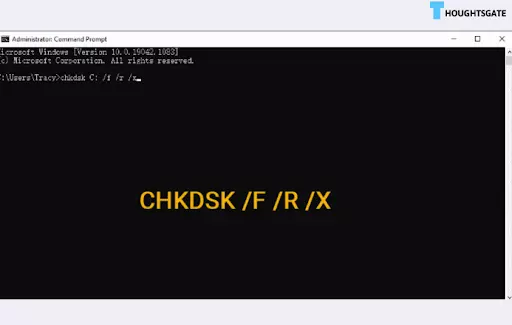
When you encounter the error message “the startup disk does not have enough space to be partitioned, ” your hard disk is running low on margin, and the CHKDSK operation cannot complete until you free up some space on it the drive.
CHKDSK is a built-in utility in Windows that checks for errors and bad sectors on the hard drive. It can fix file system errors and repair bad sectors but requires sufficient space on the hard drive.
Here are the steps to resolve this issue:
1. Free up space on the hard drive
To free up space on your hard drive, delete unnecessary files or programs, empty the recycle bin, or use disk cleanup tools. You can also move some files to an external hard drive or cloud storage to free up space.
2. Start the CHKDSK operation
Once you have freed up enough space on the hard drive, you can start the CHKDSK operation. To do this, go to the Start menu and type “cmd” in the search bar. Right-click on “Command Prompt” and select “Run as administrator.” In the Command Prompt window, type “chkdsk C: /f /r /x” and press Enter. Replace “C:” with the drive’s letter you want to check.
3. Wait until the CHKDSK operation is finished:
Depending on your hard drive’s size and the number of errors, CHKDSK may take some time to finish. Wait until the procedure is done to avoid issues.
4. Check the results
Once the CHKDSK operation is finished, you can check the results to see if any errors or bad sectors were found and repaired. To do this, go to the Start menu and type “Event Viewer” in the search bar. Open the Event Viewer and navigate to Windows Logs > Application. Look for an event with the source “Wininit” and check the details for any errors or bad sectors found by CHKDSK.
Add more space to the drive
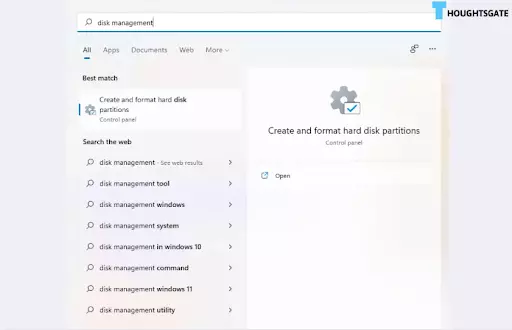
Here are the steps to add more space to the drive:
1. Determine the type of hard drive
The first step is to determine the type of hard drive you have. If you have a laptop or a desktop computer with an SSD, you may need to replace the drive with a larger one or add an external hard drive.
2. Backup your data
Before adding more space to the drive, it’s essential to back up your data to ensure you keep all important files and documents. You can use an external hard drive or cloud storage to back up your data.
3. Replace the hard drive
Install the new hard drive and reconnect the wires. You may also need to format the new drive before using it.
4. Add an external hard drive
If you have a laptop or a desktop computer with an SSD, you may need to add an external hard drive to add more space. You can connect an external hard drive to your computer using a USB cable. Once the drive is connected, you may need to format it before using it.
5. Restore your data
Once you have added more space to the drive, you can restore your data from the backup. You can copy your files and documents from the backup to the new or external hard drive.
Utilize Victoria to repair corrupted files
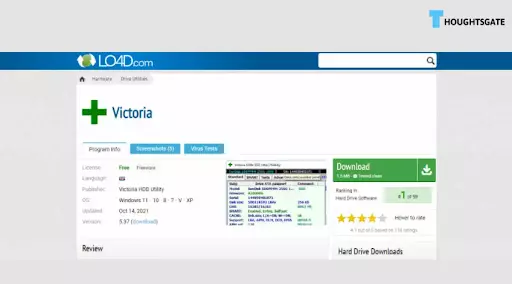
If your computer’s hard drive runs low on space or experiences bad sectors, you may encounter errors such as “the startup disk does not have enough space to be partitioned.” Fortunately, various methods exist to repair corrupted files and bad clusters on your hard drive, including the Victoria utility.
Victoria is a free, open-source utility designed to diagnose and repair various issues with hard drives, including bad sectors and corrupted files. Here are the steps to utilize Victoria to improve corrupted files when the disk does not have enough space to replace bad clusters:
1. Download and Install Victoria:
First, you need to download and install Victoria on your computer. You can find the latest version of Victoria on the developer’s website. Once you’ve downloaded the installation file, run it and follow the on-screen instructions to install Victoria.
2. Boot From a Victoria CD/DVD
After installing Victoria, you need to create a bootable CD or DVD. To do this, open Victoria and select the option to create a bootable CD/DVD. Insert a blank CD/DVD into your computer and follow the on-screen instructions to make the bootable media.
3. Boot Your Computer From the Victoria CD/DVD
Once you’ve created the bootable media, insert it into your computer and restart it. Your computer should automatically boot from the Victoria CD/DVD. If not, you may need to change the boot order in your computer’s BIOS settings.
4. Run Victoria
Once Victoria has booted up, you’ll see the main menu. You can select various options to diagnose and repair issues with your hard drive. Select the option to scan for bad sectors to repair corrupted files and bad clusters.
5. Scan Hard Drive
After selecting the option to scan for bad sectors, Victoria will scan your hard drive for issues. This process may take some time, depending on the size of your hard drive.
6. Repair Corrupted Files and Bad Clusters
Victoria will identify any bad sectors or corrupted files on your hard drive once the scan is complete. From here, you can select the option to repair these issues. Victoria will attempt to repair the bad sectors and corrupted files, which may involve moving data to a different part of the hard drive.
7. Reboot Your Computer
After Victoria has finished repairing the issues on your hard drive, you can exit the utility and reboot your computer. Your hard drive should now be free of bad sectors and corrupted files.
Replace the Drive with a New One
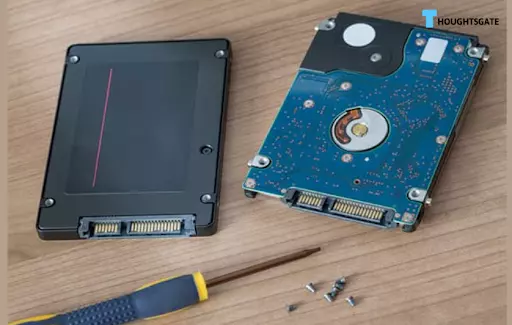
If your startup disk has insufficient space to partition, you must take additional steps to make space available.
Here are the steps to replace the drive with a new one:
1. Back up your data
Before replacing the drive, it’s essential to back up your data to an external storage device or cloud service.
2. Shut down your computer
Turn off your computer and disconnect all cables.
3. Remove the old drive
Open your computer’s case and locate the old drive. Disconnect any cables and screws that are holding the drive in place. Carefully remove the drive from the computer.
4. Install the new drive
Take the new drive out of its packaging and insert it into the same slot as the old drive.
5. Reinstall your operating system
Boot your computer using an installation disc or USB drive containing the operating system. Follow the on-screen prompts to install the operating system on the new drive.
7. Restore your data
Once the operating system is installed, you can restore your data from the backup you created earlier.
If your startup disk does not have enough space to be partitioned, you may need to free up some space before proceeding with the above steps.
Here are some tips for freeing up space:
- Remove unused applications and files from your hard drive.
- Use disk cleanup tools to clear temporary files and other unnecessary data.
- Move large files to an external storage device or cloud service.
- Uninstall applications you no longer use.
FAQs.
1. What causes bad clusters on a hard drive?
Bad clusters on a hard drive can occur due to several reasons. One of the common causes is physical damage to the disk surface, such as scratches, dust, or heat. Damage to the disk surface can cause errors when reading or writing data, leading to bad clusters.
Another cause of bad clusters is software-related issues, such as malware infections, corrupt system files, or improper shutdowns. These issues can corrupt data on the disk and cause bad clusters to appear. Sometimes hardware failure also causes bad clusters, such as issues with the read/write head or the disk controller.
You can use tools like CHKDSK in Windows or Disk Utility in macOS to detect bad clusters on a hard drive. These tools scan the disk, looking for bad clusters in user file data and marking them unusable. Regularly checking your hard drive for bad clusters and taking appropriate action to prevent further data loss or disk failures is essential.
2. What does replacing bad clusters mean?
Replacing bad clusters on a hard drive refers to marking and isolating damaged sectors of the disk surface and remapping the data to healthy sectors. This prevents the operating system from using bad clusters and avoids potential data loss or corruption.
After detecting the bad clusters, the operating system or disk repair tool scans the disk, looking for bad clusters in user file data, and marks them as unusable. Then, the data on the affected sectors are moved to a healthy location on the disk, and the file system is updated with the new site.
In some cases, if the number of bad clusters is small, the operating system can remap the data automatically without any user intervention. However, if the number of bad clusters is large or the physical damage to the disk, the operating system cannot repair the disk.
Replacing bad clusters on a hard drive is important to maintain data integrity and prevent further damage to the disk. Regular backups of essential data are important as a precautionary measure in case of unforeseen issues.
3. Can CHKDSK damage a drive?
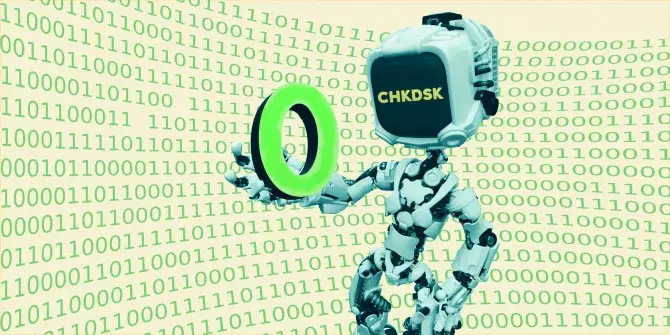
CHKDSK (Check Disk) is a built-in utility tool in Windows designed to check and repair file system errors and bad sectors on a hard drive. In general, CHKDSK does not cause any damage to a drive.
If CHKDSK is misused or interrupted while running, it can cause data loss or corruption. It is essential to let CHKDSK complete its scan and repair process before shutting down or restarting the computer.
To minimize the risk of data loss or damage, backing up important data before running CHKDSK or any disk repair tool is recommended. CHKDSK shouldn’t destroy a drive if it’s used correctly and there are no hardware concerns.
4. Is it OK to stop CHKDSK?
CHKDSK (Check Disk) is a built-in utility tool in Windows designed to check and repair file system errors and bad sectors on a hard drive. Stopping CHKDSK while running is not recommended, as this can cause data loss or corruption.
When CHKDSK runs, it scans the disk for errors and bad sectors and repairs them if necessary. Stopping CHKDSK before it completes its scan and repair process can leave the disk inconsistent and cause data loss or corruption.
5. How much does it cost to fix a cluster?
The cost to fix a bad cluster on a hard drive can vary depending on several factors, such as the severity of the damage, the age and type of hard drive, and the location and expertise of the technician. If there are a few damaged clusters, the operating system or disk repair tool may automatically remap the data at no expense.
However, suppose the number of bad clusters is large, or the disk is physically damaged. In that case, the hard drive may need to be replaced, and the cost can range from a few hundred dollars to several thousand dollars, depending on the type and capacity of the hard drive.
Consult a professional data recovery agency to assess the damage and estimate the cost of fixing a damaged cluster. Using unreliable software or trying to fix problematic clusters yourself might harm the disk and cause data loss or corruption. In addition, regularly back up vital data and use tools or manufacturer-provided software to monitor hard disk health.
6. Can a cluster be repaired?
In some cases, repairing a cluster may not be feasible. If a starter disk is too small to partition, it is essential to free up space or add extra storage before repairing the cluster.
Whether a cluster can be repaired depends on the issue’s specific circumstances and the damage’s extent. Repairing a cluster and restoring its operation may require specific knowledge and experience.
Conclusion
In conclusion, when encountering the error message “The Disk Does Not Have Enough Space To Replace Bad Clusters,” there are several key points to remember. First, bad clusters on a hard disk can cause data loss and system instability, making maintaining a healthy hard disk through regular maintenance and backups essential.
Second, replacing bad clusters requires sufficient free space on the hard disk, which may be an issue if the disk is already close to the total capacity. In such cases, freeing up space or adding more storage may be necessary before attempting to replace bad clusters.
Third, the error message itself indicates that there may be problems with the hard disk that need to be addressed, and it is important to investigate further to identify and fix the underlying cause of the issue.
Maintaining a healthy hard disk is crucial for avoiding data loss and system instability. When encountering the error message “The Disk Does Not Have Enough Space To Replace Bad Clusters,” it is important to investigate further and take steps to address any underlying issues with the hard disk. Proper care and maintenance may keep your hard drive functioning efficiently and avoid unpleasant clusters.

Benjamin is tech-savvy and loves to research the highly dynamic technological world. Keeping track of all the tech stocks, tech inventions, and latest developments in the tech world keeps him firm.
He has been writing for the past 12 years and is currently connected with ThoughtsGate.com. Playing ice hockey with his childhood friends is what keeps him fresh.
